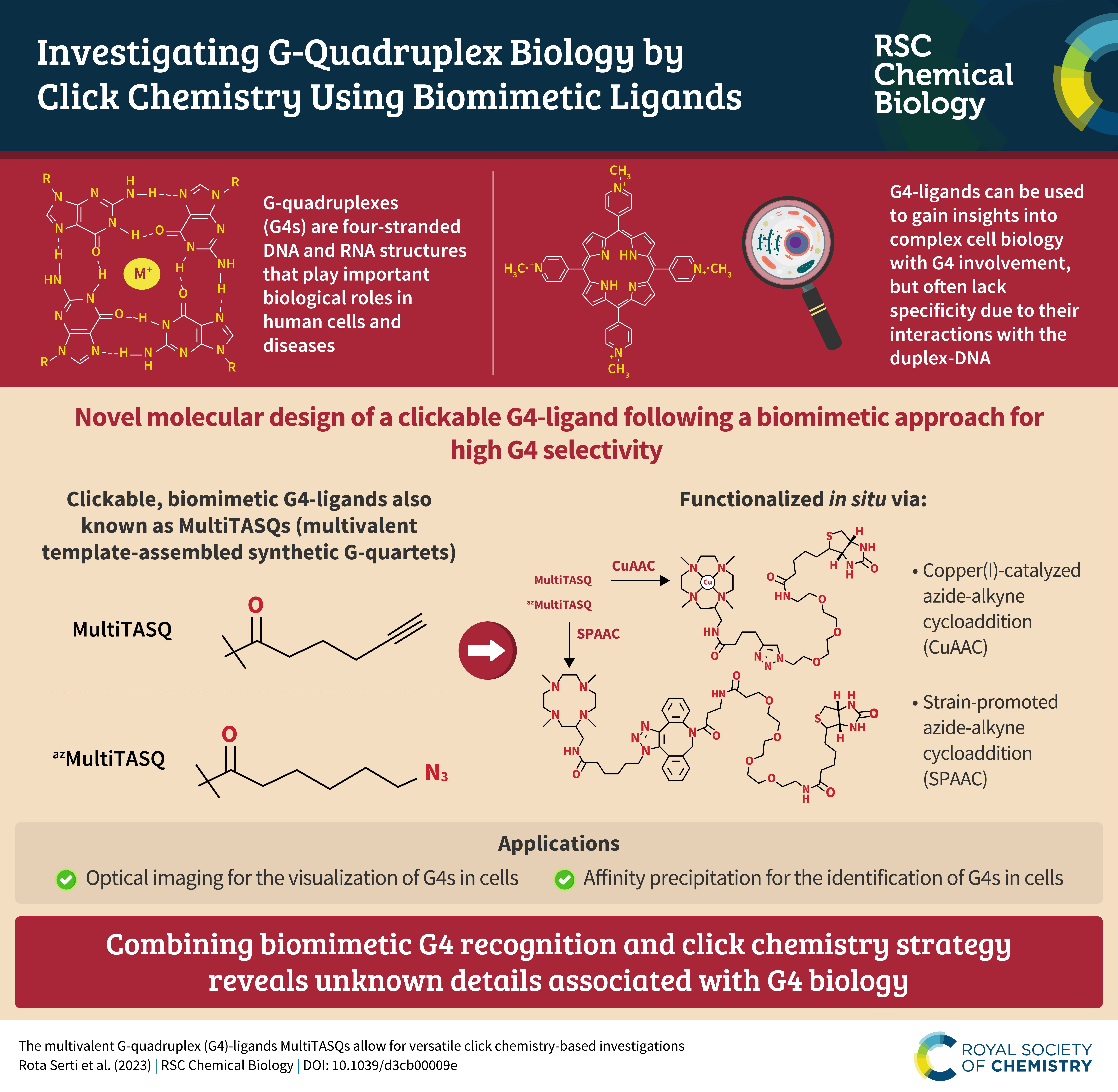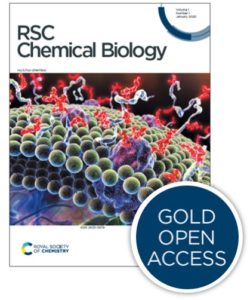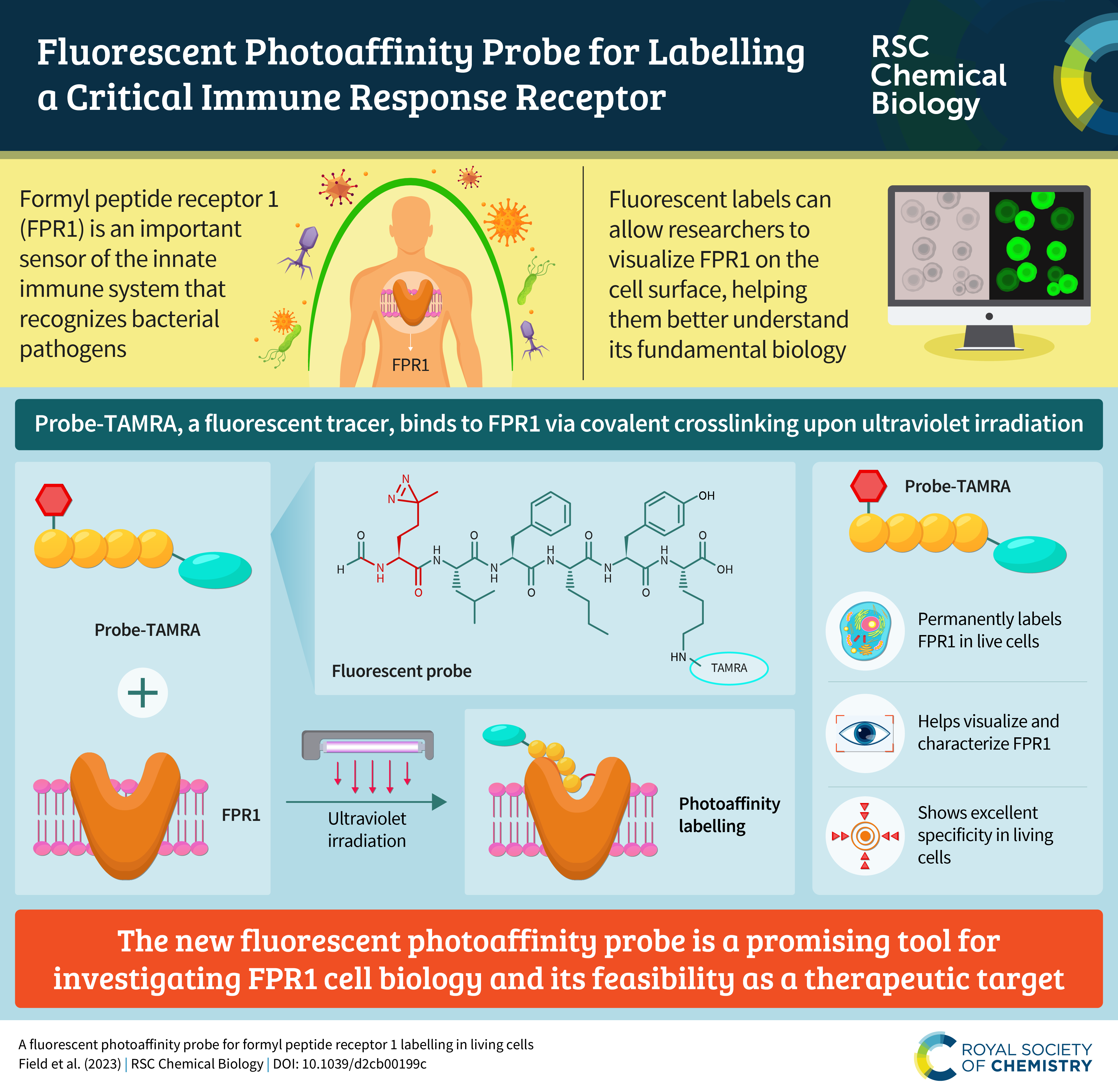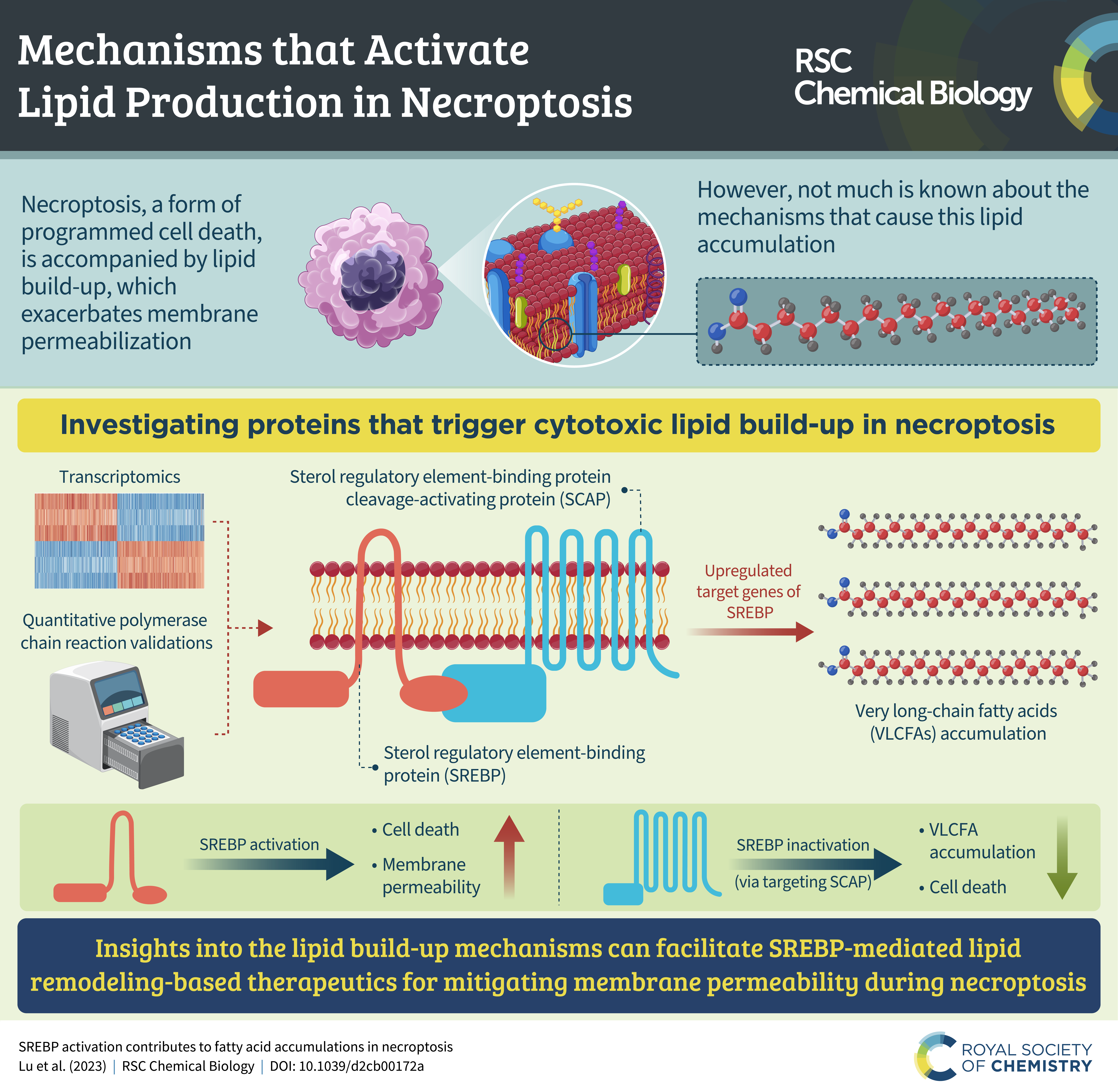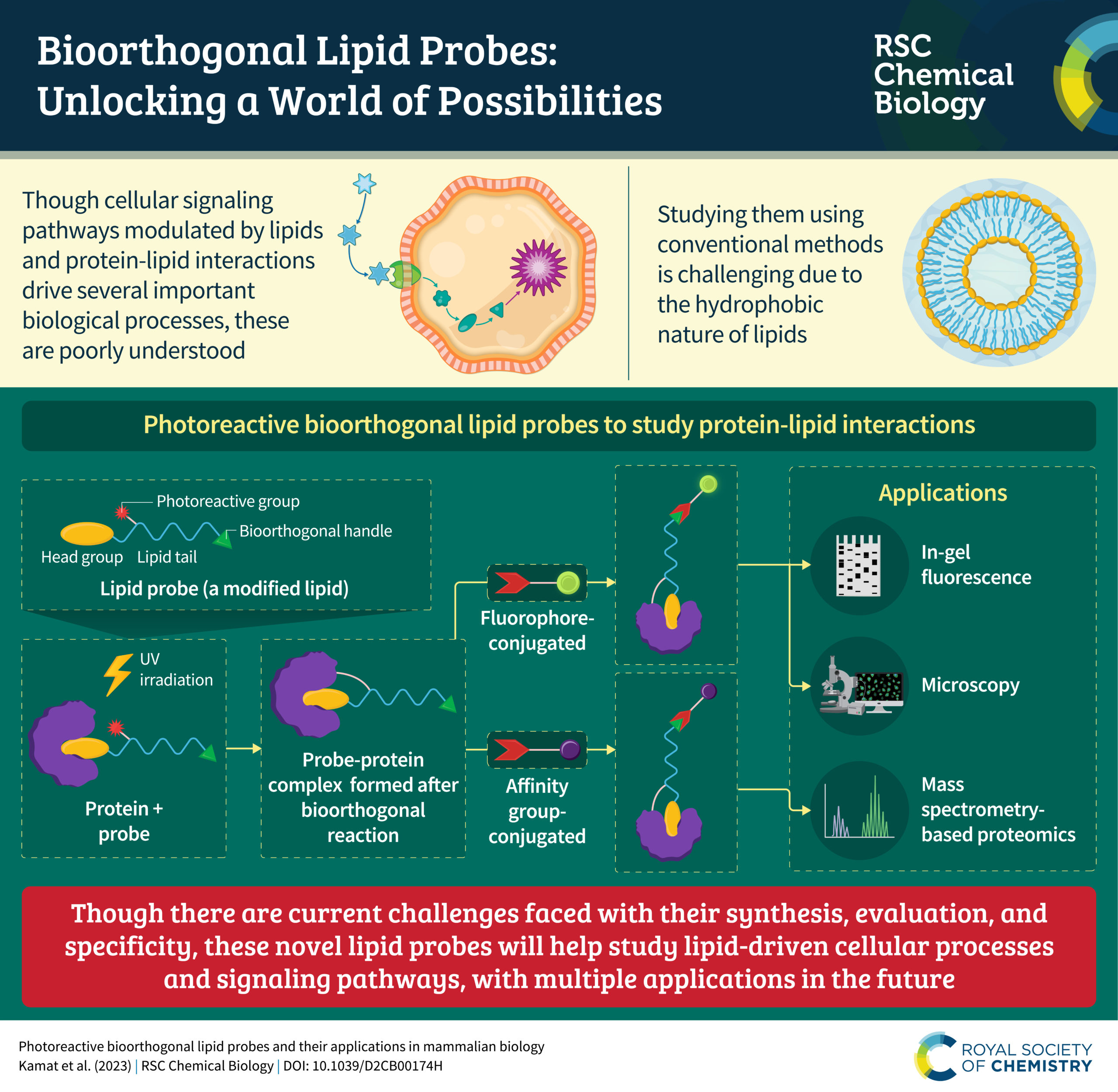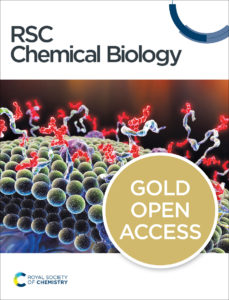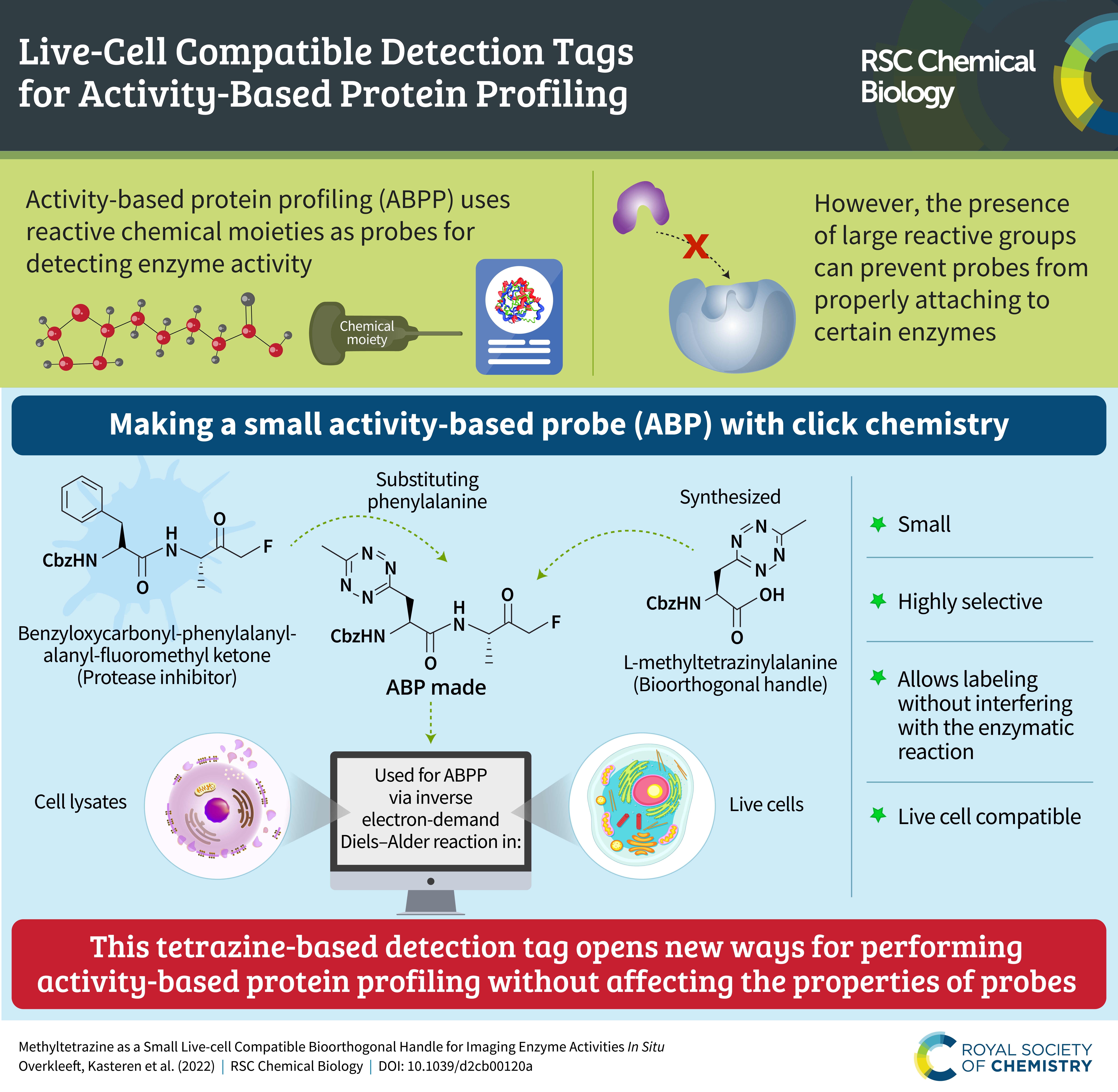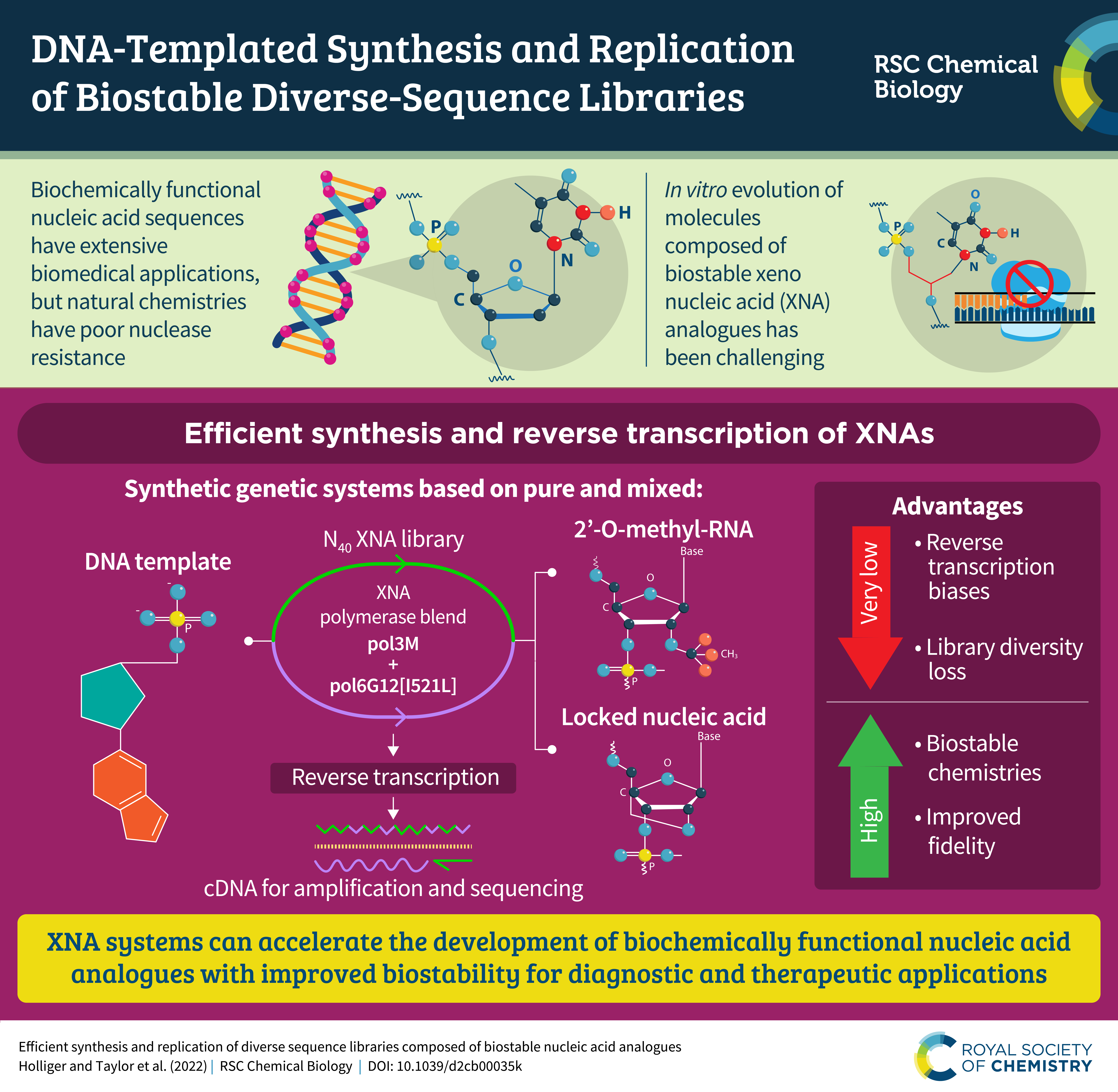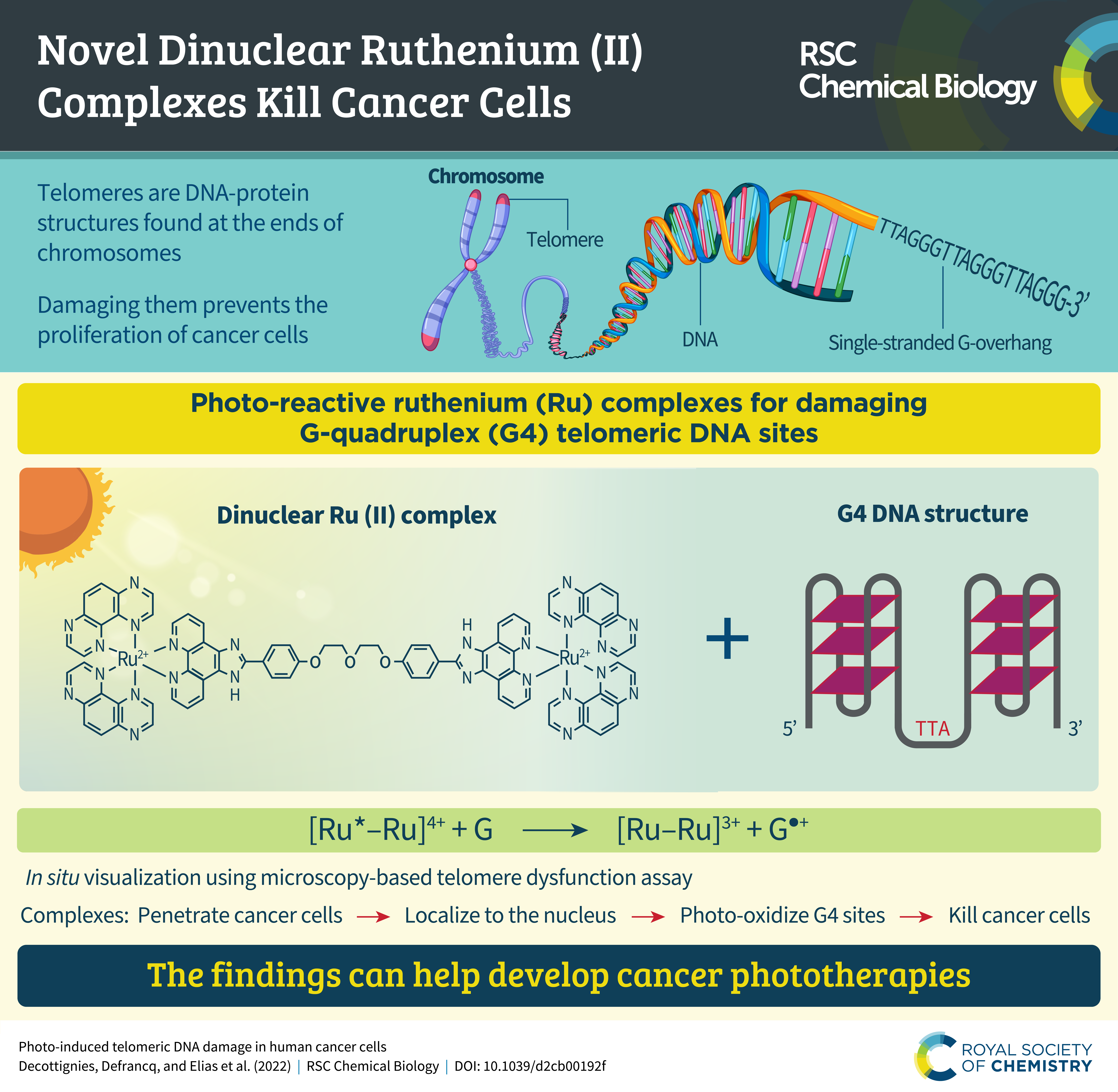About this article
G-quadruplexes (or G4s) are four-stranded DNA and RNA structures that fold from guanine (G)-rich sequences. G4 are suspected to play key biological roles in human cells and diseases. Small molecules that selectively target G4s (or G4-ligands) can thus be used as modulators to gain insights into the cell circuitry where G4s are involved. While hundreds of G4-ligands have been designed, synthesized and used, most if not all of them are flat aromatic molecules prone to interact with the duplex-DNA (the major form of DNA within the nucleus), which mechanically decreases their specificity for G4s.
We have developed a brand new molecular design, following a biomimetic approach that hinges on the observation that G4s are stable secondary structures owing to the ability of Gs to self-associate to form G-quartets, and then of G-quartets to self-stack to form the columnar core of G4s. Therefore, using a synthetic G-quartet as a G4-ligand represents a unique example of biomimetic recognition of G4s, relying on a like-likes-like approach, which is the surest pledge for a very high G4-selectivity.
In this article, we report on the design, synthesis and use of synthetic G-quartet-based ligands, also referred to as TASQs (for template-assembled synthetic G-quartets). These TASQs are the latest prototypes of TASQs, being multivalent TASQs (that is why we refer to them as MultiTASQs) able to be functionalized in situ by click chemistry (both CuAAC and SPAAC) for optical imaging and affinity precipitation purposes. These bioorthogonal investigations thus provides unique information about G4 biology.
Click on the infographic to read the full paper!
About RSC Chemical Biology
Led by Hiroaki Suga (University of Tokyo), RSC Chemical Biology is dedicated to publishing and disseminating the most exceptionally significant, breakthrough findings of interest to the chemical biology community. All submissions are handled by our experienced and internationally recognised Associate Editors. For more information on the journal, please visit the journal homepage.
As a gold open access journal, there are no barriers to accessing content and your research article will reach an international audience. Please note that the article processing charges are waived until mid-2022, so the journal is currently free to publish in.
RSC Chemical Biology is now indexed in the Directory of Open Access Journals (DOAJ), PubMed Central, Scopus and Web of Science: Emerging Sources Citation Index. Find out more about the journal and submit your work at rsc.li/rsc-chembio
Royal Society of Chemistry


